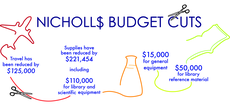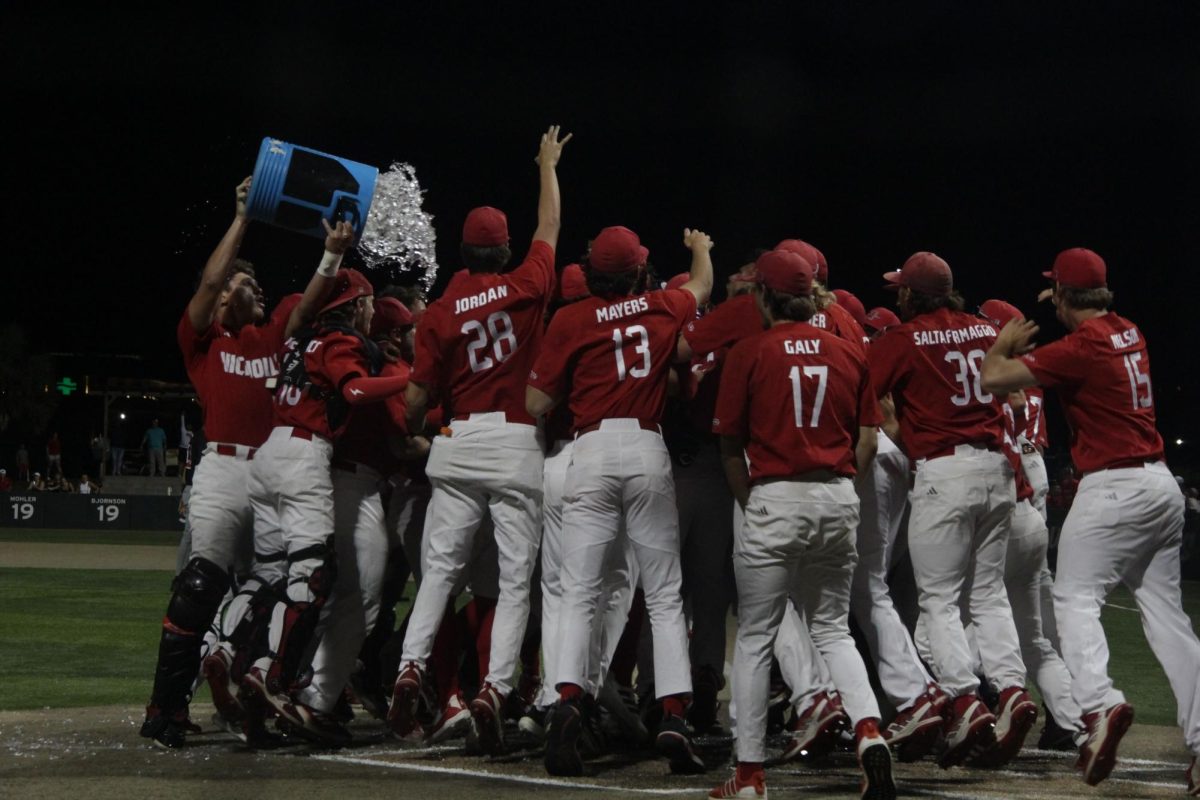Nicholls students, faculty and staff returned this spring to a slimmer financial institution after a mid-year budget reduction of almost $1.5 million in early January. Originally estimated at $2.5 million, the University administration was required to cut $1,456,276 from the remaining 2008-2009 operating budget. The University’s current fiscal year ends June 30.
“This news comes at a time when Nicholls received no new operating dollars for the current fiscal year and is addressing the loss of revenues from hurricanes Gustav and Ike,” University President Stephen Hulbert said in a press release. “In order to meet this challenge, all areas of the University will be impacted. Despite this unfortunate situation, our goal has been and will be to maintain academic quality and service to our students.”
Areas that received the largest cuts include travel expenses, supplies and capital outlay.
The travel budget was reduced by $125,000. Money allocated for supplies was cut by $221,454, which included $99,852 for educational supplies. Capital outlay was reduced by $175,000, which included $110,000 for library and scientific equipment and $50,000 for library reference materials.
“All of us at Nicholls understand the University’s obligation to support state efforts to eliminate the $341 million projected deficit,” Hulbert said. “It is unfortunate that higher education, which represents 4.5 percent of the state budget, must absorb 16 percent of the $341 million figure.”
The athletics program’s budget was reduced by $471,195. The budget was cut to adjust for lost game guarantees and other areas of revenue generation resulting from canceled football games and increased athletic program costs, Hulbert said.
“We are facing tough economic times in state government,” Hulbert said. “This will require very difficult decisions that will impact all of the Nicholls community, including faculty, staff and students.”
The budget reduction is affecting students by way of a decrease in course offerings and increases in class sizes. Library hours and other lab hours are being reduced, as well as student employment opportunities and the number of scholarships offered.
The decreased course offerings and increased class sizes are a result of a reduction in adjunct faculty funding and freezing vacant full-time faculty positions.
The University was able to reduce the budget without eliminating any personnel, however, vacant positions remain unfilled as part of a hiring freeze, Hulbert said.
Before the University closed for the Christmas holidays, the administration implemented a series of energy conservation measures as part of a proactive cost cutting plan.
The efficiency plan is expected to save more than $20,000 per year.
As a result of the conservation plan, the University fountain across from Elkins Hall on Highway 1 was turned off, electricity and gas powering the anniversary monument at the center of the Quadrangle has been shut off and the tennis are no longer lit at night.
In addition, the University will closely monitor and adjust accordingly the thermostat and water heater settings throughout campus buildings. Parking lots that were unused between semesters were not lit at night.
“It is important to note that campus safety will not be compromised as a result of these measures,” Mike Davis, assistant vice president for administration, said.







![Assistant coach Cody Livingston [#53] talking with pitcher Nico Saltaformaggio [#38] on the mound(5/12).](https://thenichollsworth.com/wp-content/uploads/2024/05/LivingstonNicoHuddle-vs-Lamar-1200x800.jpg)

